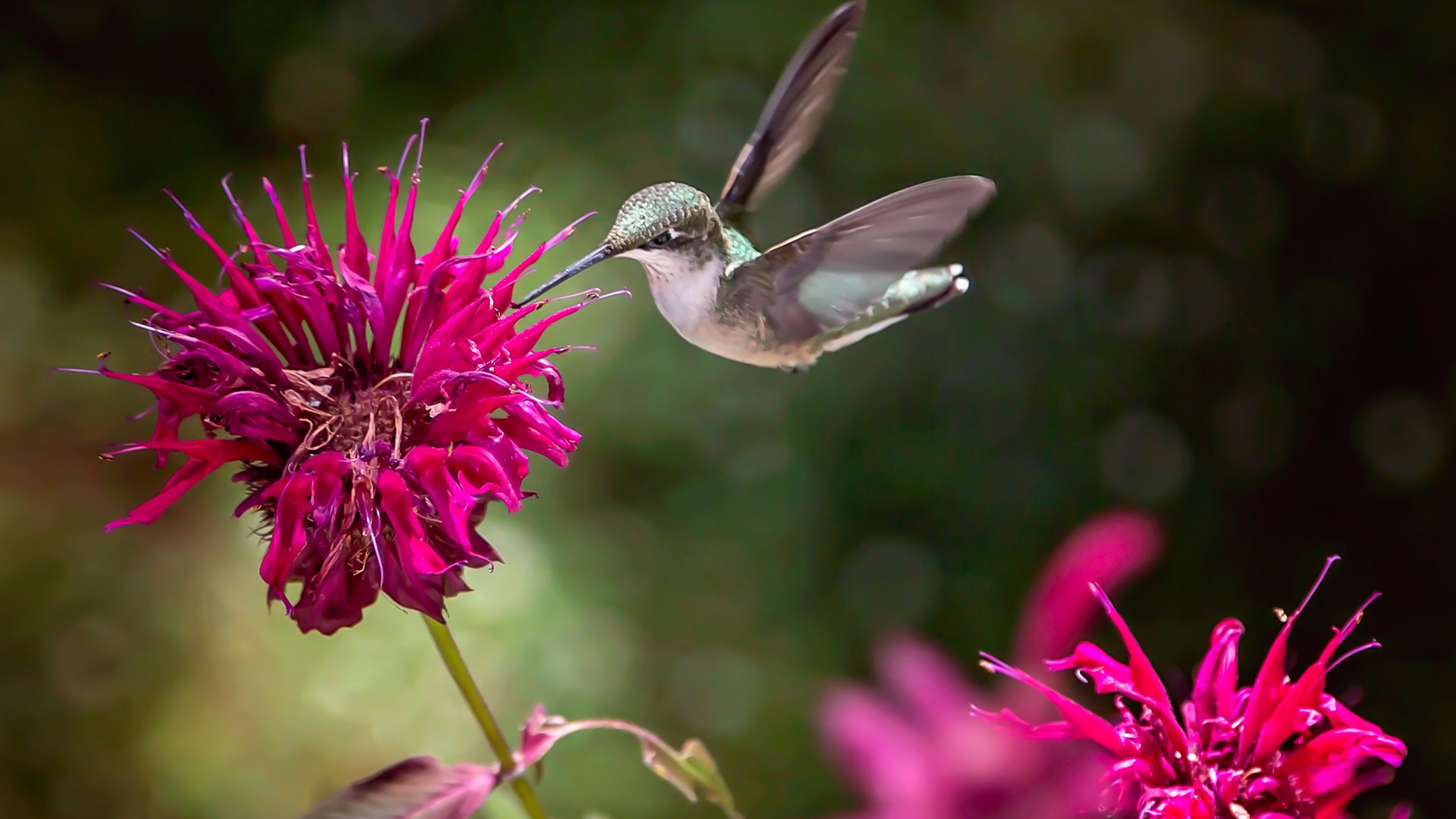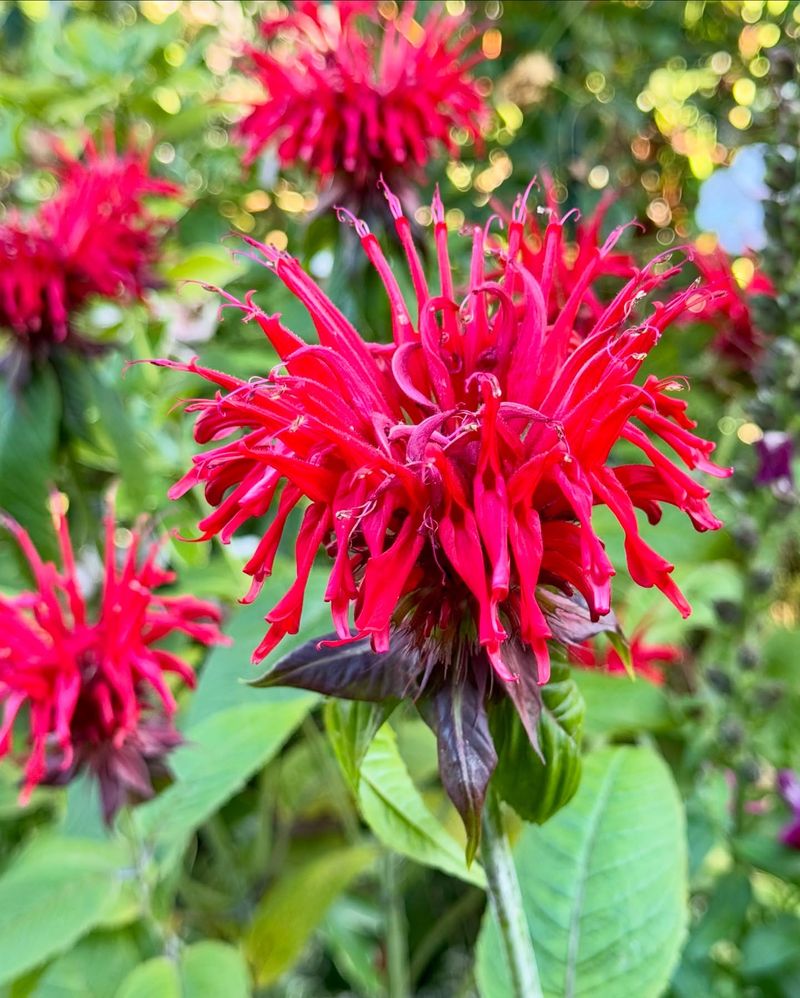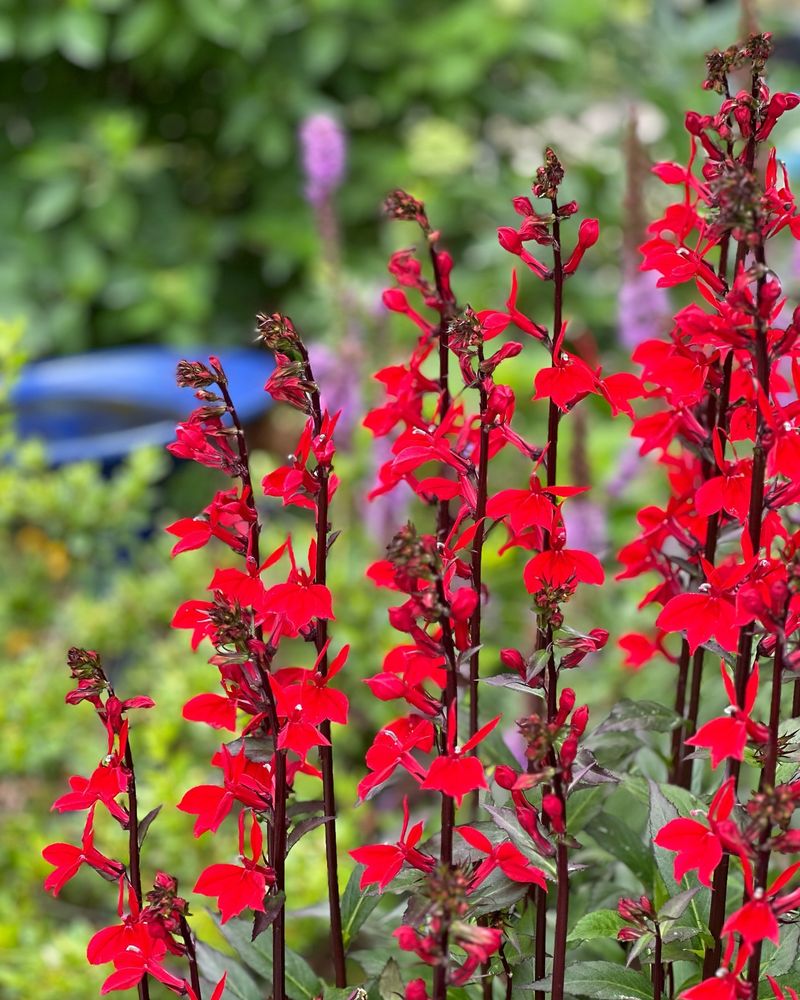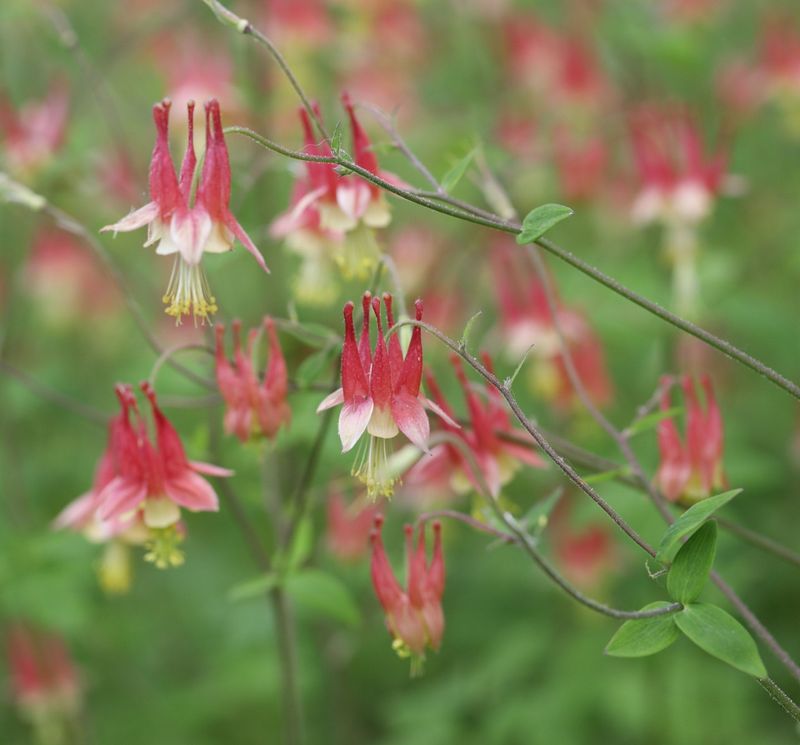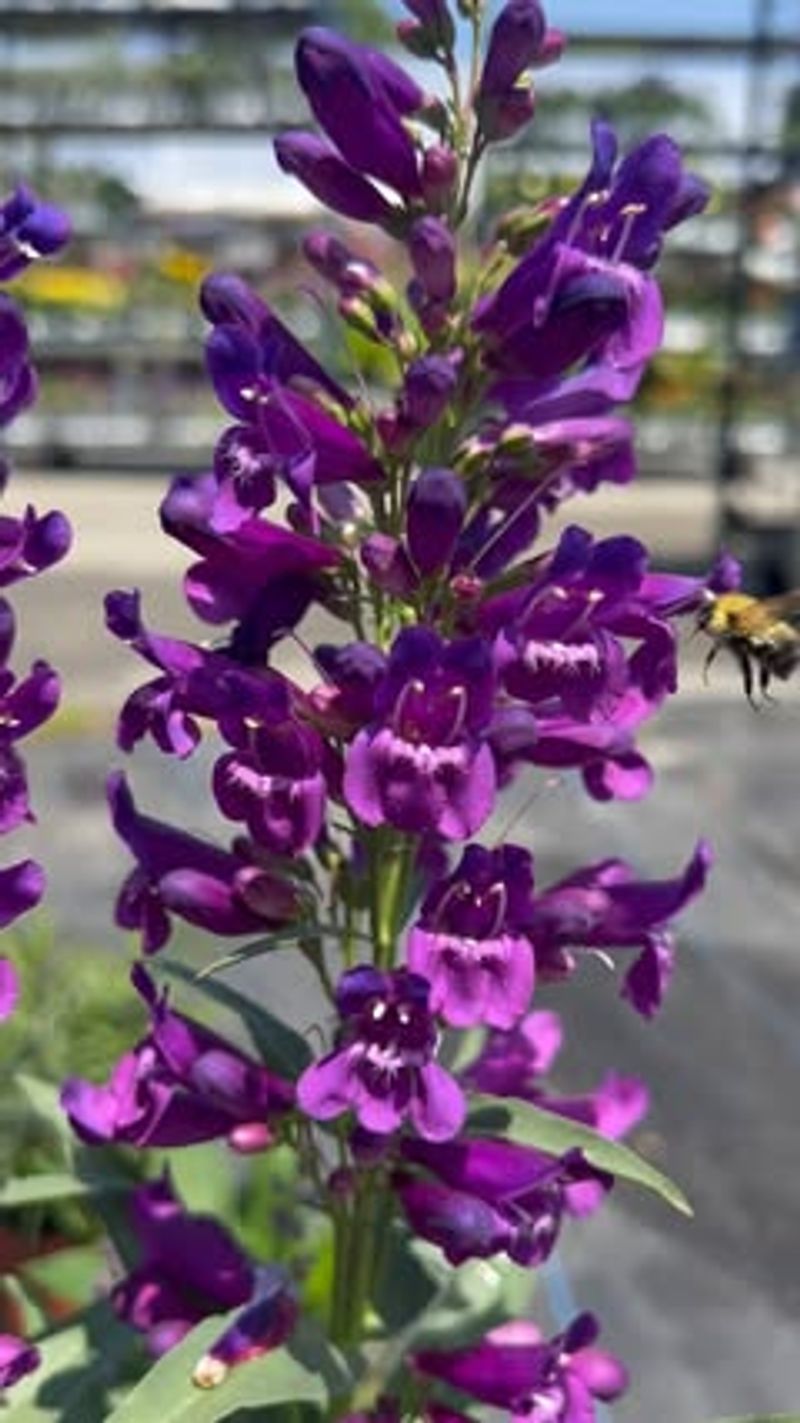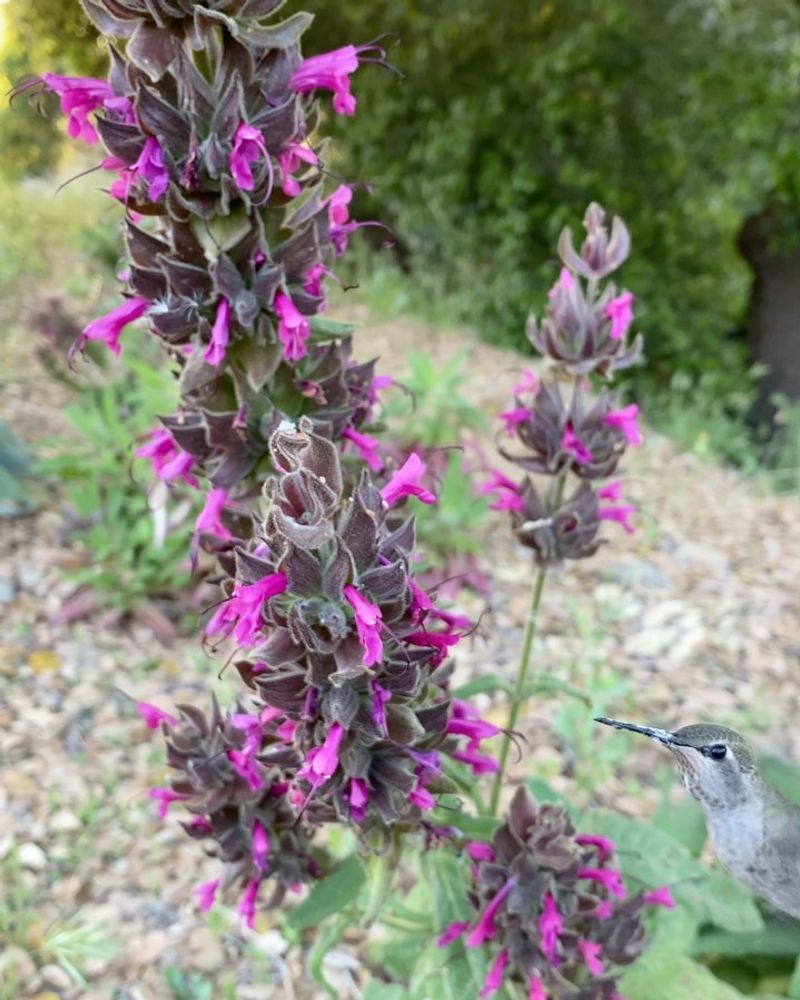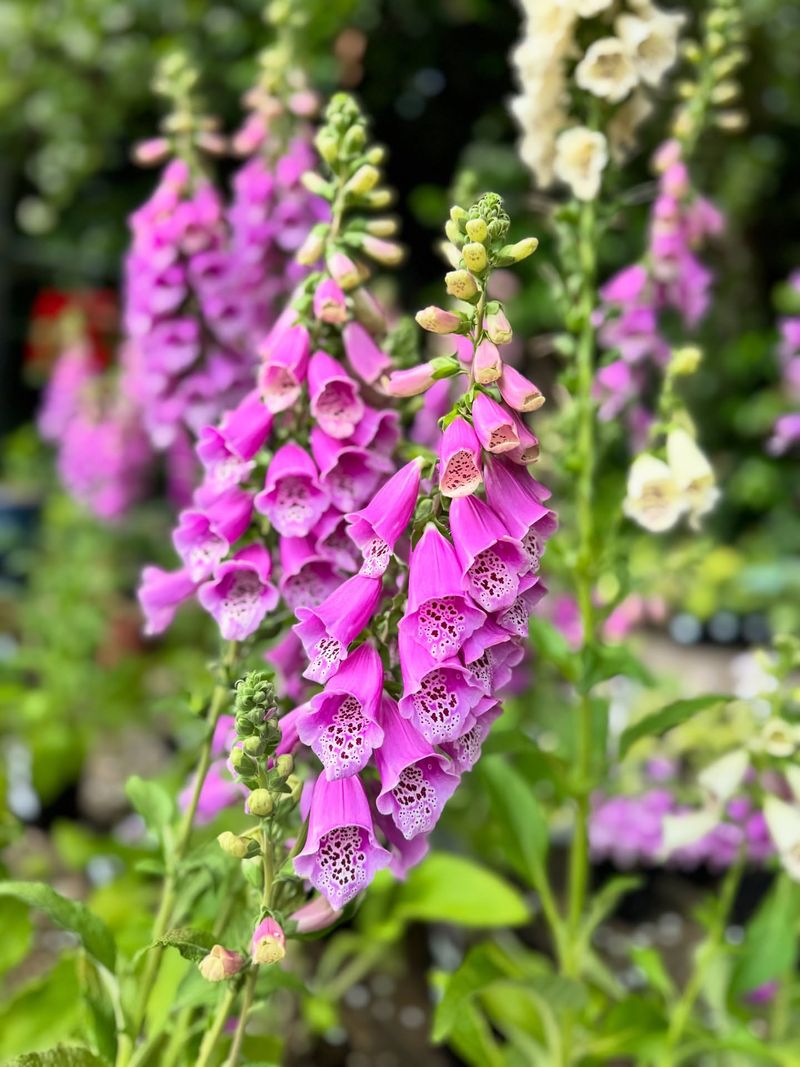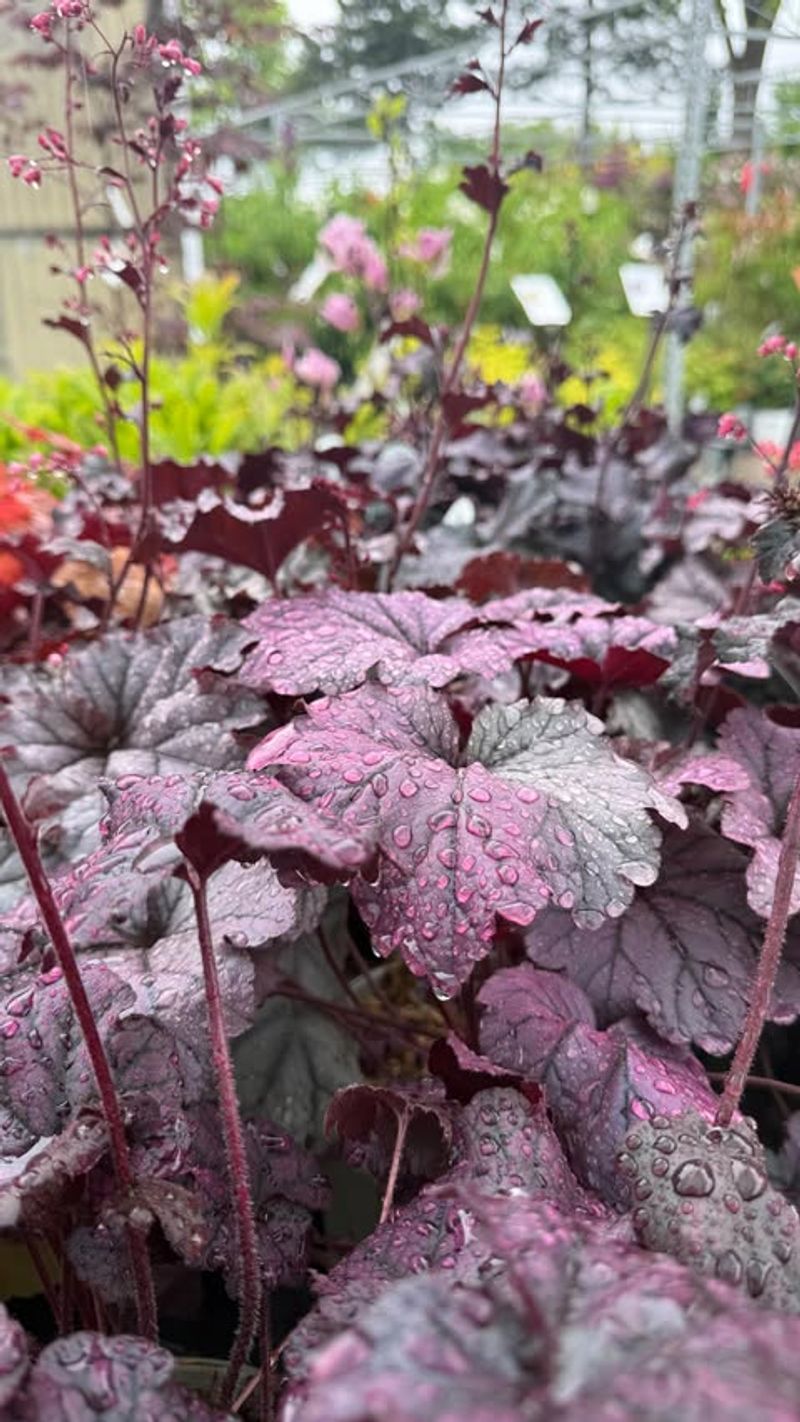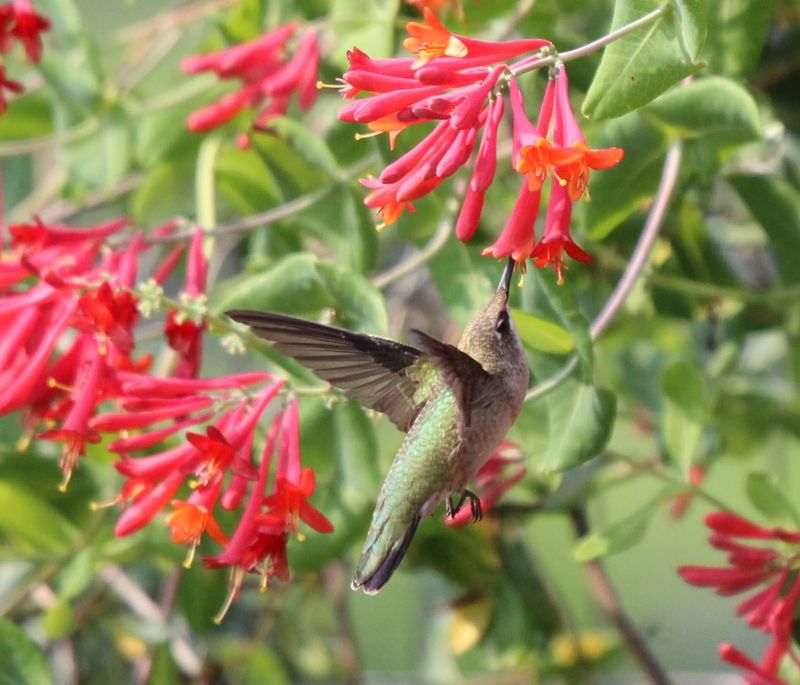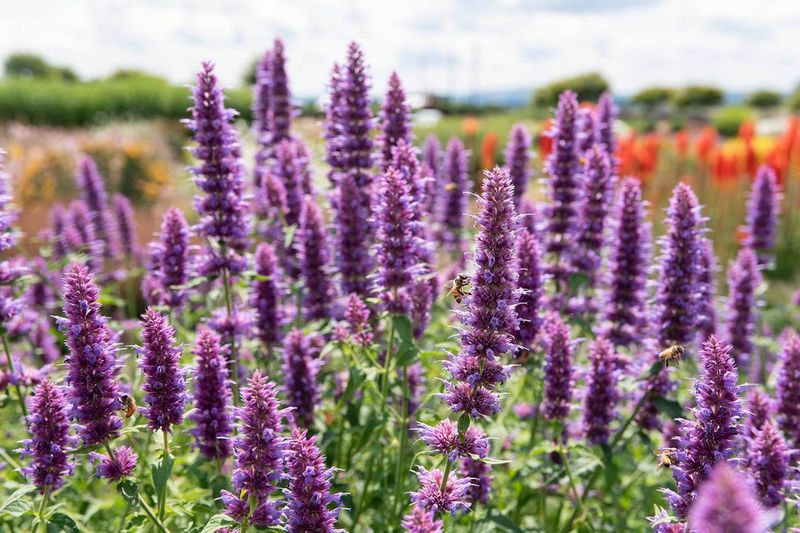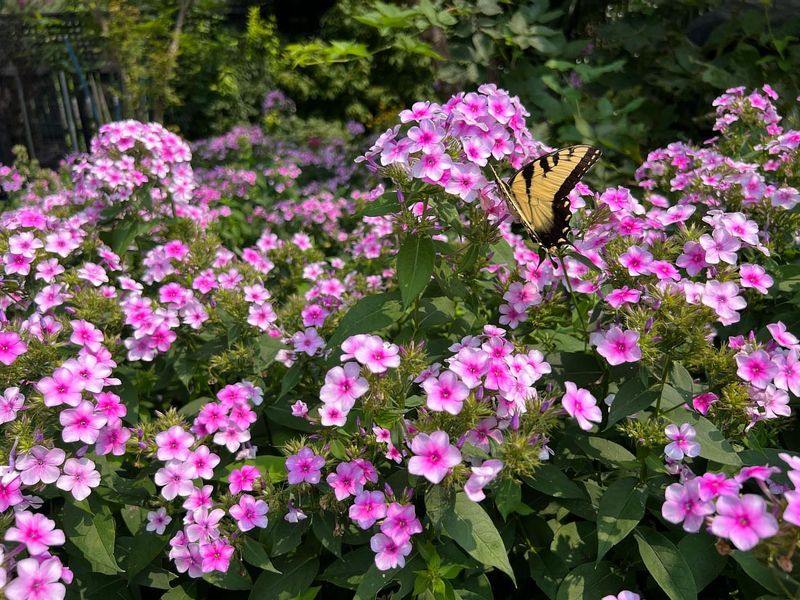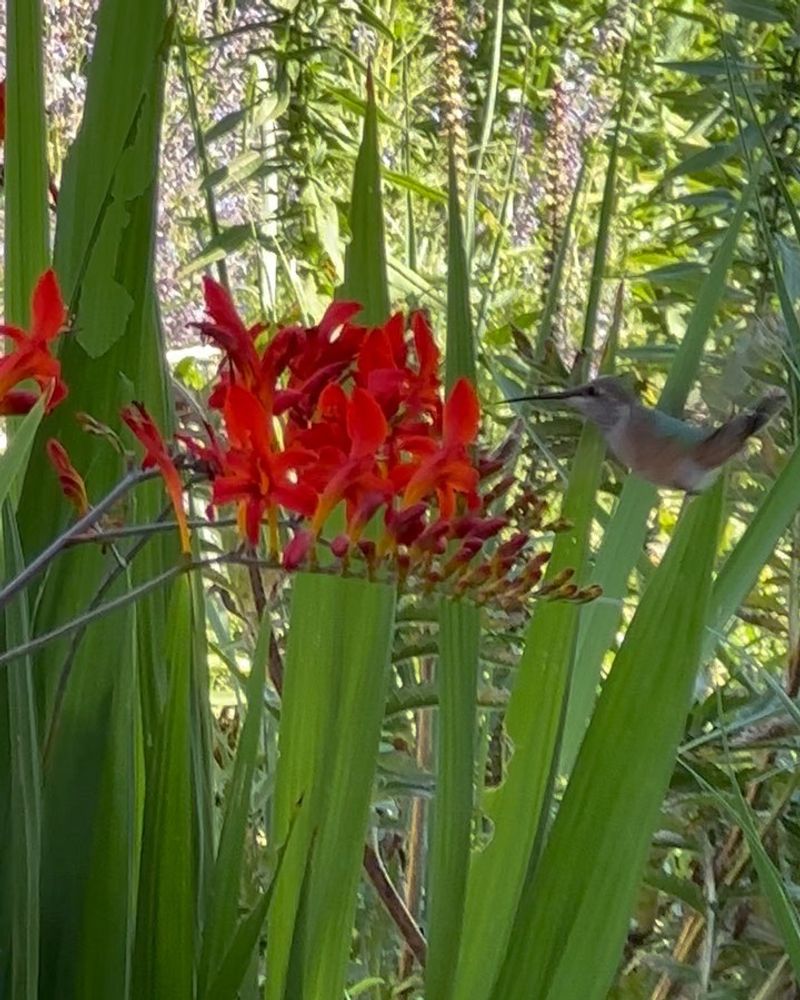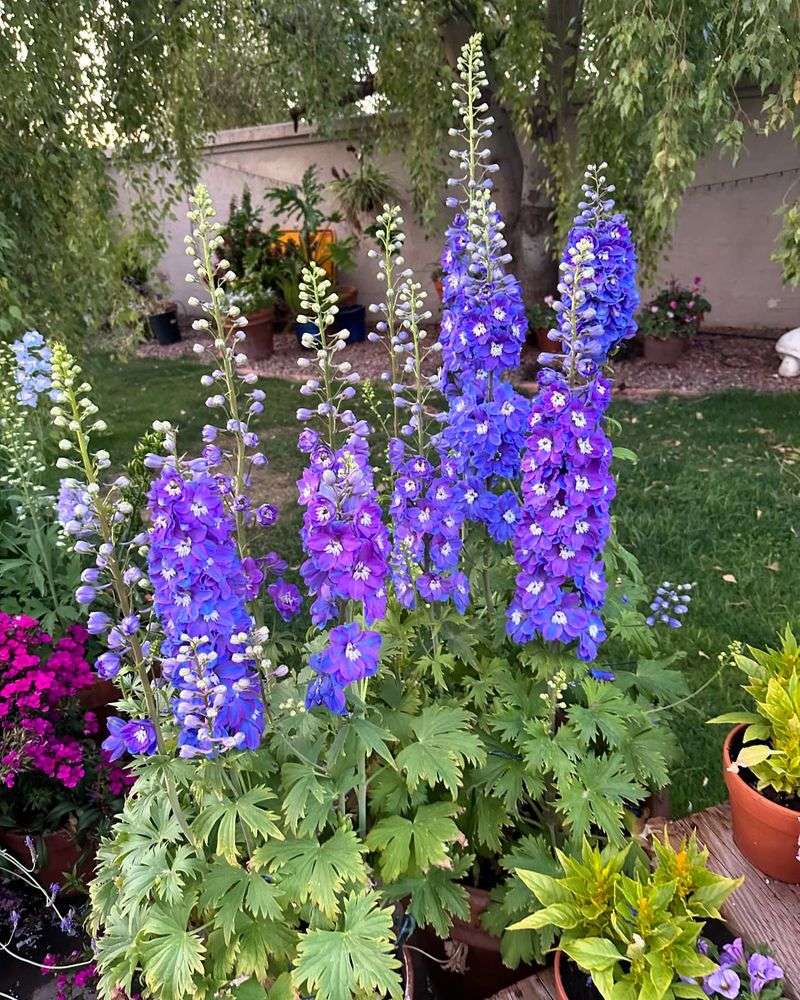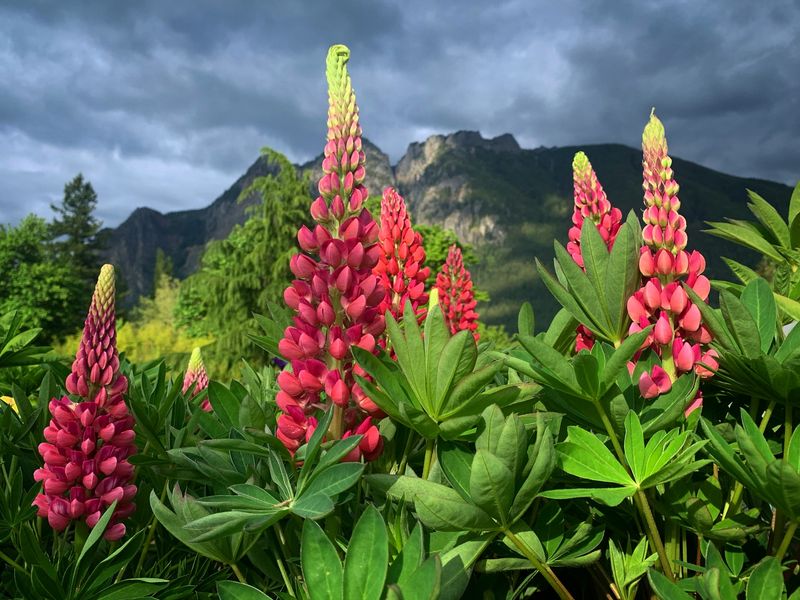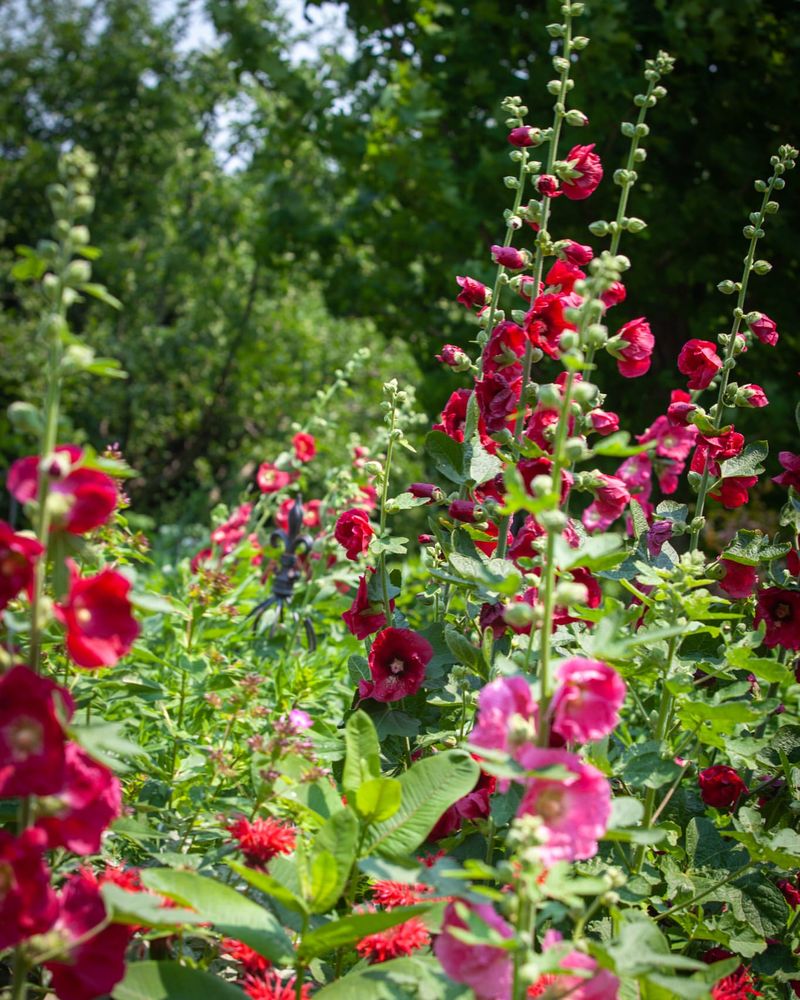If you want to turn your garden into a hummingbird hotspot, it’s easier than you think. These low-maintenance perennials don’t just survive with minimal care—they explode with blooms that hummingbirds can’t resist.
Bright, nectar-rich, and built for repeat visits, these plants bring color and winged visitors back year after year without extra effort.
1. Bee Balm (Monarda)
Vibrant red, pink, or purple blooms make bee balm an absolute magnet for hummingbirds. The tubular flowers perfectly match a hummingbird’s long beak and tongue, making nectar collection easy and efficient.
Native to North America, this sun-loving perennial spreads readily and returns reliably each summer. Even better, bee balm tolerates poor soil conditions and requires only occasional watering once established.
2. Cardinal Flower (Lobelia cardinalis)
Nothing catches a hummingbird’s eye quite like the brilliant scarlet spikes of cardinal flower. Standing tall at 2-4 feet, these show-stopping blooms create vertical interest in partially shaded garden spots.
Cardinal flower prefers consistently moist soil but requires little other maintenance. The plant’s native status means it’s perfectly adapted to support local wildlife while being resistant to most pests and diseases.
3. Columbine (Aquilegia)
Delicate dancing flowers with distinctive spurred nectar tubes make columbine irresistible to hummingbirds. The unique shape evolved specifically to accommodate these special visitors, creating a perfect ecological partnership.
Available in nearly every color of the rainbow, columbines thrive in partial shade and adapt to various soil types. They self-seed readily, creating charming drifts of blooms that return year after year with absolutely no effort on your part.
4. Penstemon (Beardtongue)
Long-blooming tubular flowers in shades from scarlet to purple make penstemon a hummingbird favorite from early summer through fall. The plant’s upright growth habit adds structural interest to garden borders while serving as perfect hummingbird feeding stations.
Drought tolerance once established makes penstemon incredibly low-maintenance. Many native varieties exist, ensuring there’s a perfect option for virtually any garden condition across North America.
5. Salvia (Sage)
Spikes of intensely colored tubular blooms make salvias among the most reliable hummingbird attractors. The genus includes dozens of varieties ranging from compact 12-inch plants to impressive 4-foot specimens.
Heat and drought tolerance are hallmarks of most salvias, making them perfect for low-water gardens. Many varieties bloom continuously from spring through fall frost with minimal deadheading, providing reliable nectar sources when other flowers have faded.
6. Foxglove (Digitalis)
Dramatic spires of spotted, tubular blooms make foxglove a cottage garden classic that doubles as hummingbird heaven. The tall flower stalks can reach 4-5 feet, creating a vertical paradise of nectar-filled tubes.
Technically biennials or short-lived perennials, foxgloves self-seed so prolifically you’ll always have plants at various stages. They thrive in partial shade and adapt to various soil conditions with minimal intervention needed.
7. Coral Bells (Heuchera)
Dainty bell-shaped flowers on tall, slender stems dance above colorful foliage, creating irresistible feeding stations for hummingbirds. Modern varieties offer stunning leaf colors from purple to caramel, adding year-round interest even when not in bloom.
Shade tolerance makes coral bells perfect for woodland gardens or spots where other perennials struggle. These hardy plants require almost no maintenance beyond occasional division every few years to keep them vigorous and healthy.
8. Trumpet Honeysuckle (Lonicera sempervirens)
Clusters of tubular, nectar-rich blooms in coral-red hues make trumpet honeysuckle a hummingbird paradise. Unlike its invasive Japanese cousin, this native vine behaves itself while providing months of reliable blooms.
Semi-evergreen in many regions, trumpet honeysuckle offers multiple seasons of interest. The twining habit makes it perfect for fences, trellises, or arbors, creating vertical feeding zones that hummingbirds particularly appreciate.
9. Agastache (Hyssop)
Aromatic foliage and spikes of tubular flowers in vibrant hues make agastache a multi-sensory garden delight. Hummingbirds particularly favor the nectar-rich blooms that appear from midsummer through fall.
Exceptional drought tolerance once established makes this perennial remarkably easy to grow. Many varieties reach 2-4 feet tall, creating substantial nectar sources that need virtually no care beyond cutting back in late winter.
10. Phlox (Phlox paniculata)
Sweetly fragrant flower clusters in shades from pure white to deep purple make garden phlox a butterfly magnet that hummingbirds can’t resist either. The flat flower clusters provide perfect landing pads for butterflies while hummingbirds hover to sip nectar.
Long blooming from midsummer through early fall, phlox creates reliable color when many perennials have finished. Modern mildew-resistant varieties have eliminated the main maintenance concern, making these plants truly carefree.
11. Crocosmia
Fiery orange-red tubular blooms on graceful arching stems make crocosmia an exotic-looking hummingbird favorite. The sword-like foliage provides architectural interest even when the plant isn’t flowering.
Growing from corms that multiply readily, crocosmia forms impressive clumps over time. Hardy in zones 5-9, these South African natives thrive in average garden soil with minimal care beyond occasional division when clumps become crowded.
12. Delphinium
Majestic spires in shades of blue, purple, pink, and white create dramatic vertical elements that hummingbirds use as lookout perches between feeding sessions. The nectar-rich flowers attract these tiny birds throughout the summer months.
Though sometimes considered fussy, newer compact varieties are much more forgiving and long-lived. Providing support for the tall flower spikes is the main maintenance requirement for these stunning perennials that return reliably year after year.
13. Coneflower (Echinacea)
Bold daisy-like flowers with prominent central cones provide landing pads where hummingbirds perch between feeding sessions. Modern varieties offer an expanded color range from traditional purple to coral, yellow, and even green.
Legendary drought tolerance makes coneflowers virtually indestructible once established. Native to North American prairies, these tough perennials thrive in full sun and poor soil, returning reliably for many years with absolutely no pampering required.
14. Lupine (Lupinus)
Spectacular spires of pea-like flowers in jewel tones create dramatic vertical elements that hummingbirds can’t resist. The distinctive palmate foliage adds textural interest even when the plants aren’t blooming.
Though short-lived perennials, lupines self-seed readily in favorable conditions. They prefer cool summers and well-drained soil, making them perfect for northern gardens where they’ll return reliably with minimal care for several years.
15. Hollyhock (Alcea rosea)
Towering flower stalks reaching 6-8 feet create natural hummingbird highways in the garden. The open-faced blooms in colors from white to nearly black provide abundant nectar throughout summer.
Though technically short-lived perennials, hollyhocks self-seed so readily they function as permanent garden fixtures. Their biennial nature means you’ll always have plants at different growth stages, ensuring continuous blooms year after year with zero effort beyond initial planting.

